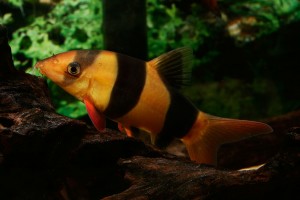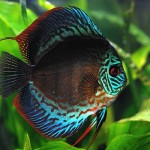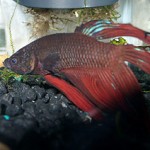It seems a lot of friends in the fish breeding is a very serious matter, it is not true! We fish in order to enjoy leisure, breeding it just kept decent, healthy growth of fish after the inevitable result. We must learn to enjoy the happiness, the pursuit of excellence should not be too straight, or fish and people are tired!
Now we are not from a professional point of view to look at some of the general happiness of the fish breeding habits.

1: many children of the viviparous fish. Red sword, Peacock, Moonlight, Mary and other such fish breeding is very simple, paired, mating until the fish are not we born to be overly concerned, after the birth of feeding fish can eat small fish, simple and fun.
2: weak and helpless oviparous fish. Traffic lights, skins, skirts, zebra and other small size of these fish can not protect their own offspring! Advantage of the fish reproductive cycle is short! Defects is arbitrary strong will devour the eggs of their own reproduction, the survival of these eggs can only be fate. So when you multiply the bottom of the breeding tank shop isolation to prevent the eggs to eat, hate Oh! Although there are some problems but it is interesting.
3: a family of small oviparous fish. Lili, vest, Man Lung, fighting fish and other such fish male responsibility, first in the water where there is attachment spit bubbles, building up a nest full of bubbles, the female will take the initiative to go and male mating. Each mating time, males will be born of the egg in its mouth, to the bubble nest, the cycle repeated until the end of reproduction. Tired of the male will expel the bubble nest near the fish, including females, including (well, relatively speaking, for large fish to survive it have to run oh)! Good care not to fall out of each one bubble nest eggs, and other small fish hatched started swimming, it will fall out as fish eggs, will be forced to send bubble nest.
4: Strength of large oviparous fish. Maps, pineapple, mackerel and other fish has such a nature to protect their offspring. After the first match they find for themselves an ideal breeding point of expulsion in the vicinity of its kind, with the snout of the attachments to clean up the clean eggs begin to lay eggs! After careful breeding will take care to protect broodstock eggs, hard fan of water with the fins, making the currents circulating, so the eggs will get more dissolved oxygen, increased the survival rate of eggs, mackerel and even the unhatched eat bad eggs to prevent hatching eggs other images.
5: a model husband type oviparous fish. Long, sapphire and other male fish can be described as such hard work. After the male will breed the eggs in its mouth, wait until the fish hatch date.
6: Love family type oviparous fish. Discus fish to feeding this to play up. Good care of not only the eggs, small fish hatched, the brood fish secrete a “breast”, the fish do not find their own food, will go directly to parents who “milk”!
Recommendation: In addition to oviparous fish Discus and Long, the other the best preparation for a hatching tank! After breeding the species of fish eggs to hatch into the tank, this has many advantages. For example: broodstock not tired, you can rest better! Easy to keep the water! Feeding and management more convenient! Fish can be good in a safe environment for better growth.
Traffic lights breeding and larval rearing is a very difficult task. First, the traffic light needs a dark, almost no light the spawning environment, water quality requirements: pH :5.5-6 .2, kH :3-7dGH, water temperature 25 ℃ or so. Meanwhile, in the breeding tank at the bottom of the laying of dense grass or pasteurized Mosi had brown silk. In the reproduction process, the use of distilled water, breeding more and more likely to succeed success! All prepared correctly, the fish will become male and female ratio of 1:1 according to place the meantime, after a night of heat chase, almost all traffic lights began to lay eggs in the morning, the volume of the 250-350 or so, the eggs slightly sticky, will attach in the Mosi grass or brown silk, the whole spawning process takes several hours to complete, will become the fish after fish out, to prevent the swallowed eggs. About 36 hours after the eggs hatch, larvae will not swim within 36 hours * to learn to absorb their yolk nutrients required elements, and then swim on their own, before feeding a very small live bait.

















Leave a Reply